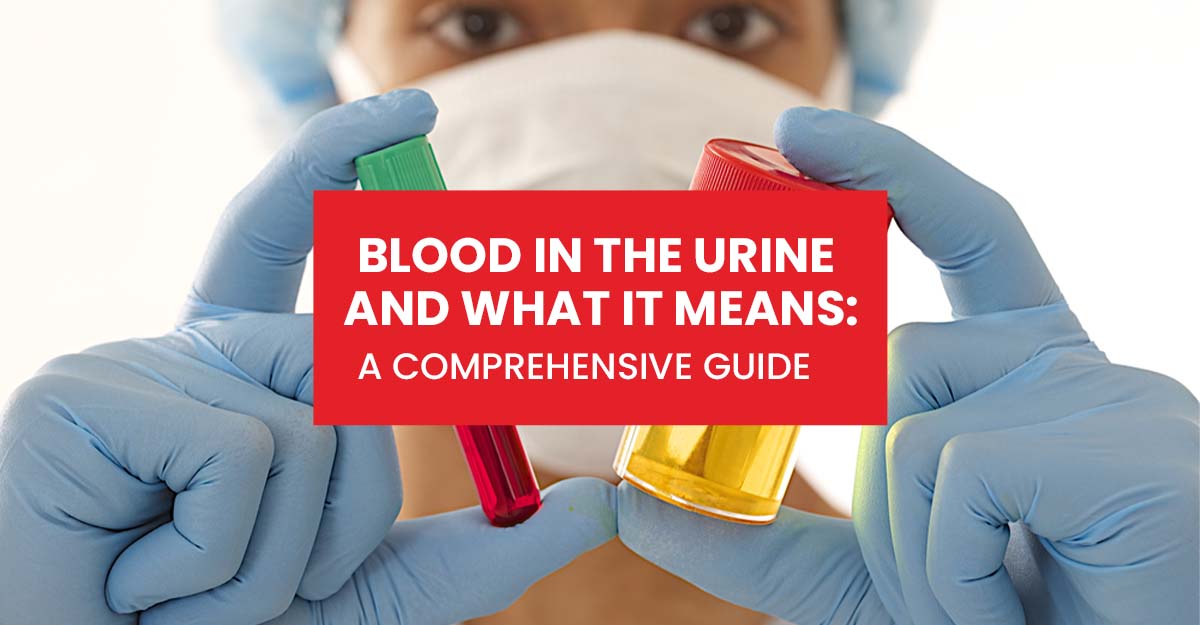
Blood in the Urine: A Comprehensive Guide
Hematuria, more commonly known as blood in the urine, can alter the color of the urine to brown, red, or pink, depending on how acidic the urine is, how long the blood has been in the urine, and how much blood is present in it. Where the blood content is too small to cause any noteworthy or visible change in urine color, which refers to as microscopic hematuria, chemical tests and microscopic examination could help detect the symptom.
People suffering from hematuria may also suffer from other symptoms of urinary tract disorders, including difficulty urinating or the urgent need to urinate, lower abdominal pain, pain in the back or at the side, and so forth. When the amount of blood in the urine increases, a blood clot can occur, totally blocking urinary flow and causing excruciating pain while urinating. Usually, this severe bleeding that forms a blood clot occurs to an injury to the urinary tract.
It is not always red blood cells that produce blood in the urine. Other causes include:
- The side effect of drugs (including senna, phenothiazines, phenacetin, rifampin, methyldopa, diphenylhydantoin, cascara, but more commonly phenazopyridine)
- Foods like rhubarb, beets, and sometimes food coloring causes a change in the urine.
- The heme-producing enzymes are deficient in porphyria (a disorder caused by an inability to produce heme, the chemical compound that gives red blood its color).
- Muscle protein (myoglobin) in urine is because of the breakdown of muscle cells.
- Hemoglobin (which carries oxygen in red blood cells) is in the urine because of the breakdown of red blood cells.
Causes of Blood in the Urine
Many problems can cause blood in the urine, from urethra issues to problems with the bladder, ureter, and so forth. We should realize that vaginal bleeding is not the same as having blood in the urine. These are two different symptoms that may have original causes.
Major Causes of blood in the urine
These may differ from person to person based on age and body construction. However, the major causes are:
- Congenital or gained anatomic abnormalities
- Urinary tract stones (in adults)
- Prostate infection (prostatitis)
- Cystitis or bladder infection.
Other less frequent causes of the symptoms include:
- Narrowing scars (called strictures) or other abnormalities of the ureters.
- Cysts in the kidneys (polycystic kidney disease).
- Disorders of the small blood vessels of the kidneys (called kidney filtering disorders or glomerular disorders).
- Noncancerous enlargement of the prostate (benign prostatic hyperplasia).
- Cancer (of the kidneys, bladder, or prostate).
Glomerular disorders or kidney filtering disorders may be part of a kidney disorder or may occur because of a disorder elsewhere in the body. These disorders are more likely if the urine has protein, clumps of red blood cells (called red blood cell casts), or malformed red blood cells. Also, almost any kind of kidney damage may cause small amounts of blood in the urine.
Severe injuries, such as falls or motor vehicle crashes, can injure the kidneys or bladder and cause bleeding.
Schistosoma haematobium, a parasitic worm that causes disease in Africa and, to a lesser extent, in India and parts of the Middle East, can invade the urinary tract, causing it. Doctors consider schistosomiasis only if people have spent time in areas where the worm lives. Tuberculosis may cause blood in the urine.
Evaluation of Blood in the Urine
Doctors first try to establish that bleeding causes red urine. Then they look for the cause of the bleeding, including where bleeding originated in the urinary tract (or occasionally elsewhere). The following information can help people know when to see a doctor and what to expect during the evaluation.
Warning signs:
Some symptoms and characteristics are causes for concern in people with blood in the urine. They include.
- A large amount of blood in the urine
- Age over 50
- Swelling of the feet or legs, plus high blood pressure
When to see a doctor:
People who notice blood in their urine should see their doctor within a day or two. However, people who pass a large amount of blood, cannot urinate, or are in severe pain should see a doctor immediately.
What the doctor does:
Doctors first ask questions about the person’s symptoms and medical history and then do a physical examination. During the history and physical examination, they often suggest a cause of it and the tests that may need to be done (see table: Some Causes and Features of Blood in the Urine).
Doctors ask how long blood has been present and whether there have been any previous bleeding episodes. They ask about fever, weight loss, or symptoms of urinary blockages, such as difficulty starting urination or inability to empty the bladder. Pain or discomfort is an important finding. A burning sensation during urination or a dull pain in the lower abdomen just above the pubic bone suggests a bladder infection. In men, mild-to-moderate pain in the lower back or pelvis is often the result of a prostate infection. Extremely severe pain is usually because of a stone or a blood clot blocking urine flow.
Doctors then do a physical examination. Usually, a pelvic checkup is necessary for women. If women have blood in the vagina, a catheter may need to be inserted into the bladder to see whether the source of blood is the bladder or the vagina. In men, doctors usually do a digital rectal examination to check the prostate.
If you notice any of these symptoms, Medbury Medicals provides health screenings. To get started, click here.

